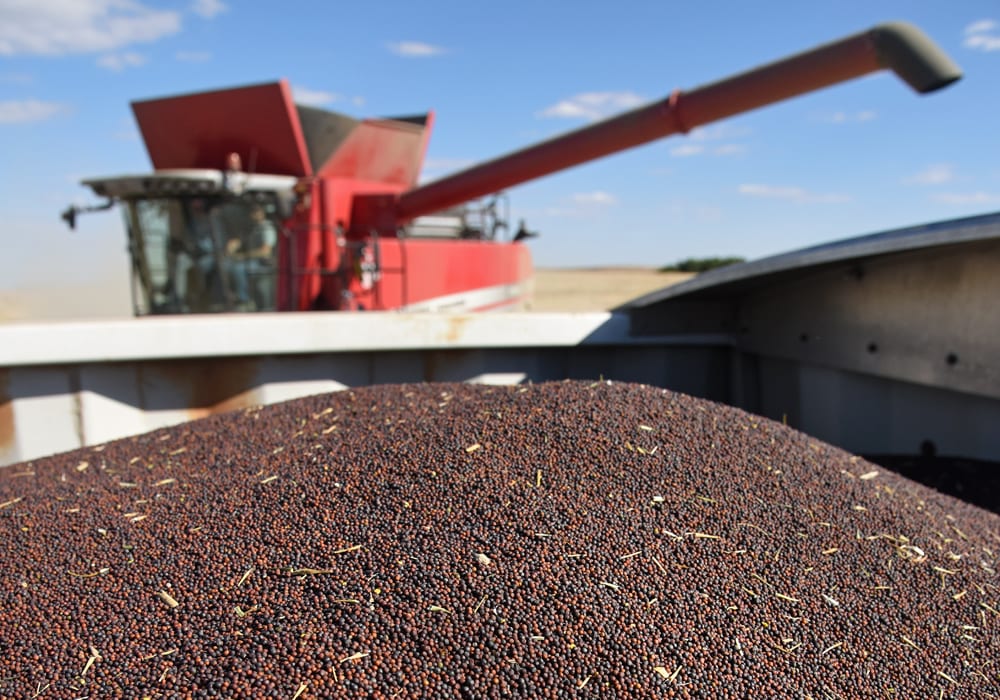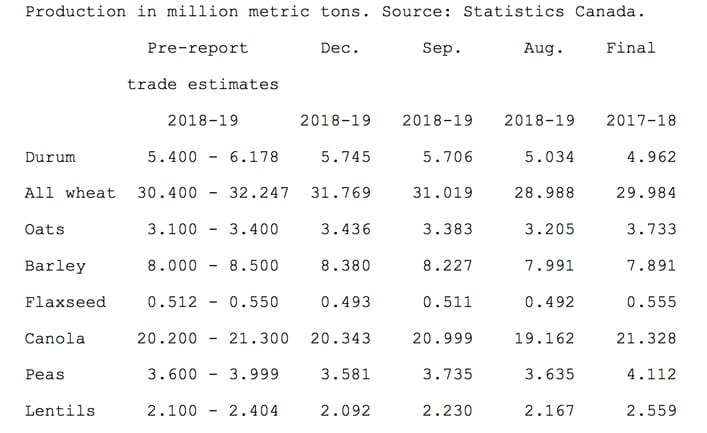Canada’s canola production was revised lower in the latest data from Statistics Canada’s Production of Principal Field Crops report issued on Dec. 6, but two observers agree the final numbers won’t have much effect on markets.
“It’s not a report that’s going to allow canola to trade tremendously strong. It might trade a shade firmer, but the number is not going to alter things too much,” said Ken Ball of PI Financial in Winnipeg, Man.
The Statistics Canada report placed final canola production at 20.343 million tonnes, which is 656,000 tonnes less than the agency’s September data and nearly one million tonnes lower than the final 2017-18 figures. Figures for September were model-based. While the final numbers for this year and last are survey based.
Read Also

Farming Smarter receives financial boost from Alberta government for potato research
Farming Smarter near Lethbridge got a boost to its research equipment, thanks to the Alberta government’s increase in funding for research associations.
“On the canola side, (the report) is mildly supportive. I’d say the big change in the Canadian dollar over the last couple of days, where it got beaten down a little bit, that probably has more of an impact than this,” said Neil Townsend, analyst with Farm Link Marketing Solutions in Winnipeg.
Ball believes canola stocks will become tighter than they have in recent years. However, he wasn’t surprised with the data for wheat.
The final number for all wheat from Statistics Canada was 31.769 million tonnes, which is up by about 750,000 tonnes from September and by nearly two millions tonnes compared to last year.
“Wheat yields were spectacular in many parts of the Prairies this year,” Ball commented.
Townsend said Farm Link believed the figures for wheat would have been higher.
“Lucky for us there’s lots of big demand for Canadian wheat this year, so having that extra wheat and especially if it’s of relatively good quality or average quality, it’s very saleable,” he said.
Looking at pulses, Townsend said what is currently happening in India will have a greater impact on the markets than the report from Statistics Canada.
“There’s a kharif crop that’s down and then a rabi crop that’s being very slowly planted. Maybe some acres won’t get in because of a lack of rain.”
Canada grew 3.581 million tonnes of peas and 2.092 million tonnes of lentils in 2018 according to Statistics Canada. That compares with 4.112 million tonnes of peas and 2.559 million tonnes of lentils in 2017.
The following is a quick summary of the Statistics Canada December production estimates for 2018/19. September model-based estimates, August survey-based estimates and year-ago numbers are included for comparison.


















